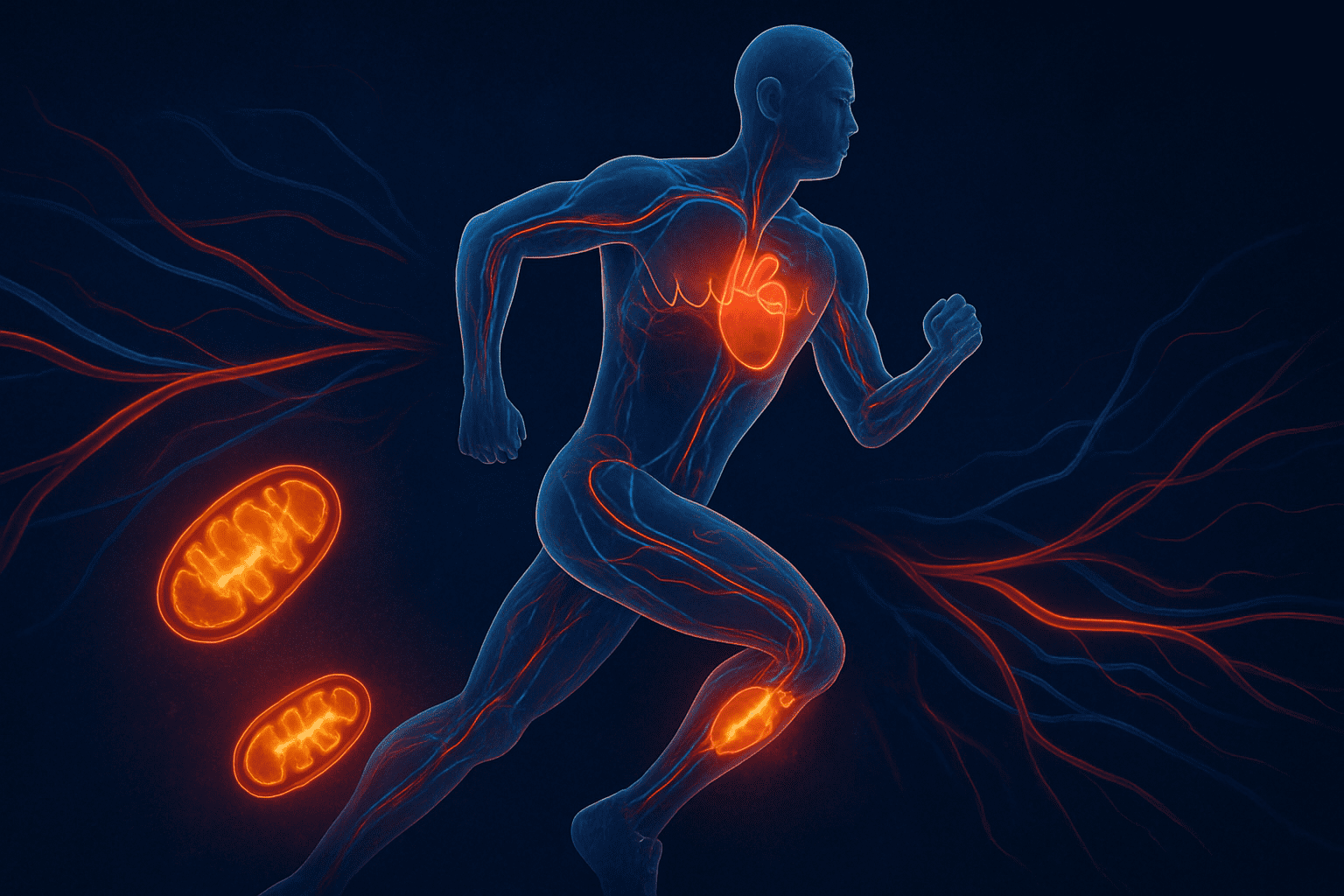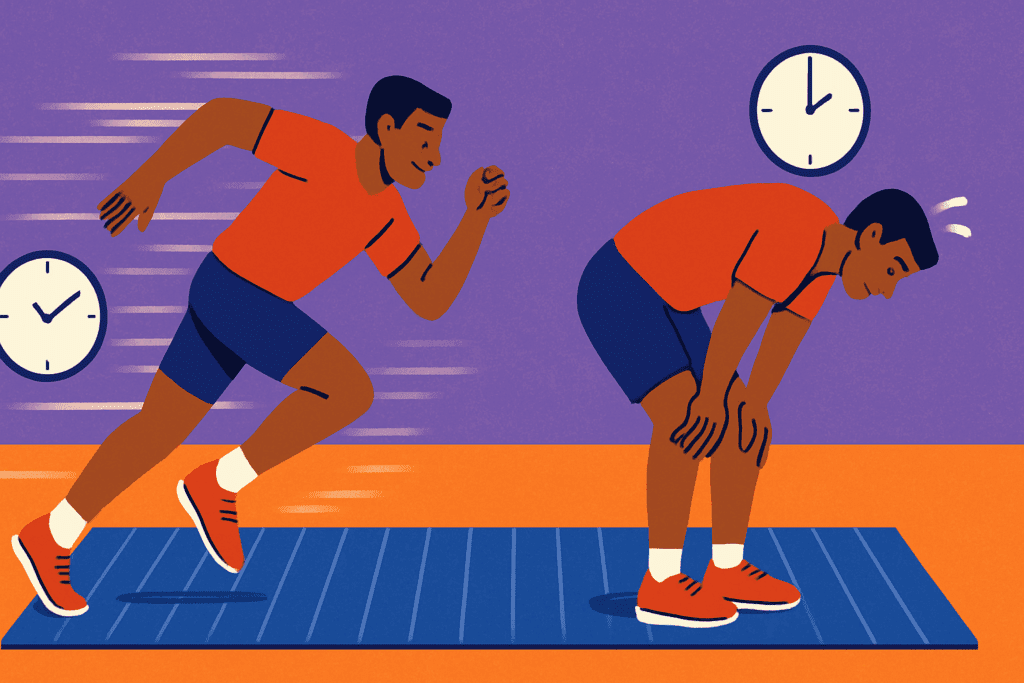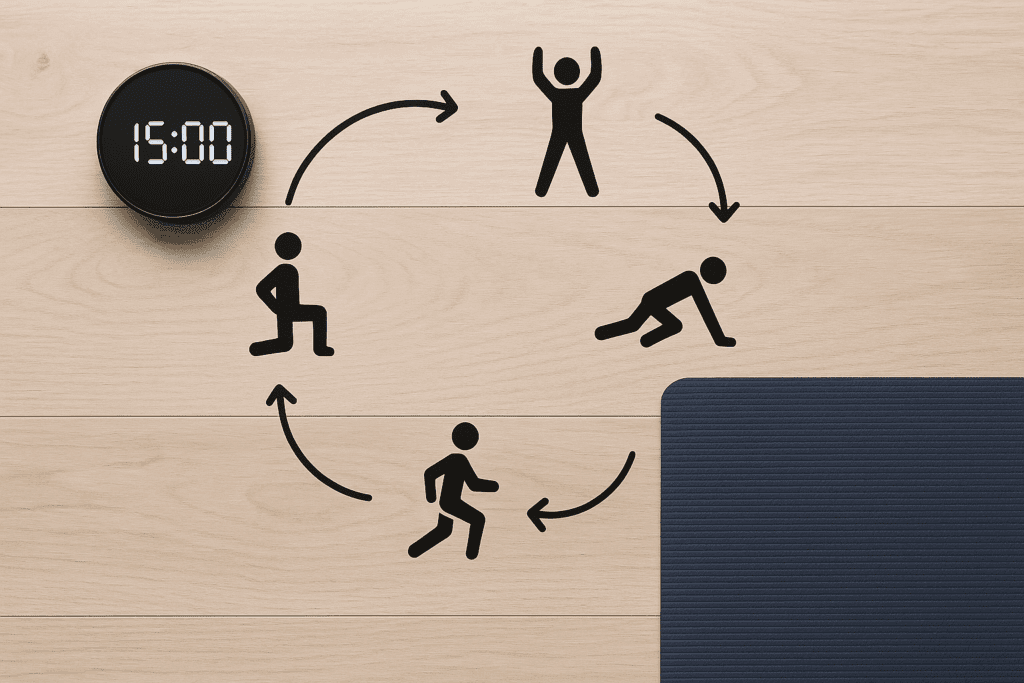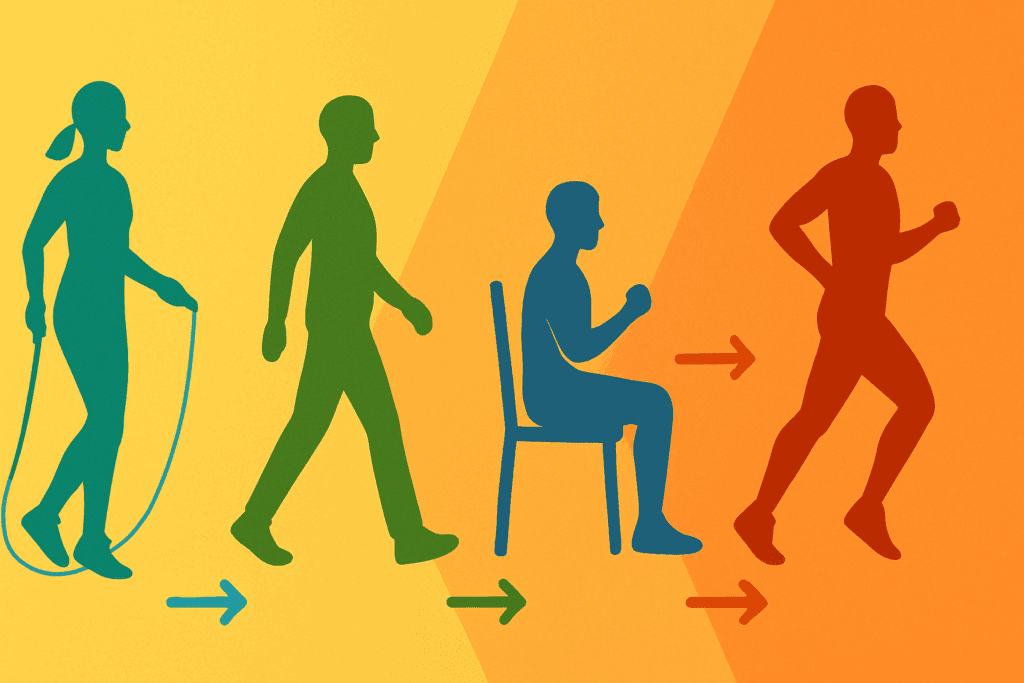In a fast-paced world where time is a luxury, finding an effective workout that delivers results in just a quarter of an hour can feel like a revelation. Whether you’re an athlete striving to improve performance or a busy professional looking to stay fit, a 15 minute cardio workout offers a compelling blend of efficiency and efficacy. The idea that you can boost endurance, enhance fat metabolism, and elevate your overall physical performance with such a short investment of time is not only motivating—it’s backed by growing scientific consensus. When approached with the right intensity and strategy, a 15 minute aerobic workout can yield results comparable to longer sessions, without requiring an hour-long commitment each day.
You may also like: How to Increase Stamina and Endurance Naturally: Smart Training Tips and Nutrition Habits That Support Cardiovascular Fitness
Cardiovascular fitness is the cornerstone of stamina, endurance, and metabolic health. Yet, many individuals struggle to incorporate consistent exercise into their routines due to time constraints or the misconception that longer always means better. Fortunately, evidence-based training strategies like high-intensity interval training (HIIT) and circuit-based cardio have redefined our understanding of what effective exercise can look like. A cardio exercise 15 minutes in length, done consistently and with proper form, can stimulate cardiovascular adaptations, improve respiratory efficiency, and trigger fat-burning mechanisms—all of which contribute to enhanced daily performance.

The Science Behind 15 Minute Cardio Workouts
A 15 min cardio workout might seem too brief to yield measurable results, but current research strongly suggests otherwise. Studies published in journals such as the American College of Sports Medicine have demonstrated that short bursts of high-intensity cardio can increase VO2 max (a key measure of cardiovascular endurance), promote muscle efficiency, and stimulate the production of mitochondria—the powerhouses of our cells. These benefits are especially pronounced when workouts involve full-body movements that engage multiple muscle groups simultaneously.
Physiologically, cardiovascular training triggers several important changes. As heart rate increases and breathing becomes deeper, the body improves its oxygen transport system, leading to more efficient delivery of nutrients and oxygen to working muscles. Over time, this translates to enhanced aerobic capacity, reduced fatigue, and better endurance across a range of activities. Moreover, when individuals perform a 15 minute aerobic workout at sufficient intensity, they can enter the “afterburn” effect, known scientifically as excess post-exercise oxygen consumption (EPOC). This phenomenon allows the body to continue burning calories at an elevated rate even after the workout is over, increasing the fat-burning potential of such short sessions.

Why Duration Isn’t Everything in Cardio
The common belief that a workout must last 30, 45, or even 60 minutes to be effective is slowly being debunked by sports scientists and fitness professionals alike. While longer sessions certainly have their place, it’s the quality and structure of the workout—not its duration—that determines its effectiveness. A cardio for 15 minutes session, when performed with maximal or near-maximal effort, can elevate heart rate sufficiently to enter the target training zone, stimulate fat metabolism, and provide significant cardiovascular benefits.
Short-duration workouts are particularly beneficial when they are planned with precision. This means incorporating exercises that elevate the heart rate quickly, such as jumping jacks, mountain climbers, burpees, high knees, or jump squats. When these exercises are performed in rapid succession with minimal rest, they mimic the effects of longer steady-state workouts in terms of cardiovascular stimulation and calorie expenditure. This makes a 15 minute cardio workout not only a time-saver but also a metabolic booster that supports fat loss and physical conditioning.

The Role of High-Intensity Interval Training (HIIT)
High-Intensity Interval Training has emerged as a highly effective method for maximizing results in a minimal timeframe. HIIT typically alternates between periods of intense effort and short recovery intervals, creating a pattern that challenges both the aerobic and anaerobic systems. In the context of a 15 min cardio workout, HIIT can be structured to include intervals such as 40 seconds of high-intensity movement followed by 20 seconds of rest, repeated across different exercises for the full session.
One of the key advantages of HIIT is its ability to enhance endurance while promoting fat loss. This dual benefit makes it an ideal format for individuals seeking to improve stamina and body composition simultaneously. Moreover, HIIT has been shown to improve insulin sensitivity, blood pressure regulation, and even cognitive function—making it a powerful tool not only for physical performance but also for long-term health. The versatility of HIIT allows it to be adapted to different fitness levels, making it accessible for beginners and challenging enough for advanced athletes.
Maximizing Fat Burn in Minimal Time
For those aiming to burn fat efficiently, a 15 minute aerobic workout performed at a high intensity can serve as an effective metabolic catalyst. Fat oxidation, the process through which the body breaks down fat for energy, increases during and after high-effort cardio sessions. This is particularly true when the workout includes compound movements that activate large muscle groups and elevate the heart rate quickly.
To optimize fat burning, it’s important to consider both workout structure and nutritional timing. Performing cardio 15 minutes a day in a fasted state (such as before breakfast) may enhance fat utilization, although this approach should be undertaken with medical guidance, especially for individuals with blood sugar concerns. Post-exercise nutrition also plays a role—consuming a balanced meal with lean protein and complex carbohydrates can support muscle recovery and sustain metabolic activity. Ultimately, consistency, intensity, and recovery are the cornerstones of an effective fat-burning cardio routine.

Supporting Daily Performance Through Cardio
Daily performance is not limited to athletic endeavors—it encompasses the energy, focus, and stamina required to navigate work, family, and social commitments. Cardiovascular health is a critical determinant of how well we perform in all areas of life. A regular 15 min cardio workout can significantly improve oxygen delivery, reduce resting heart rate, and enhance overall energy levels, leading to more productivity and less fatigue throughout the day.
Engaging in aerobic exercise 15 minutes each morning can also create a positive mental shift. Physical activity is known to release endorphins—neurochemicals associated with improved mood, reduced stress, and enhanced cognitive clarity. This psychological uplift, combined with physiological benefits, helps set the tone for a more focused and energetic day. As little as 15 minutes of consistent movement can create a sustainable foundation for better health and improved day-to-day performance.
Designing an Effective 15 Minute Cardio Routine
Crafting an efficient 15 minute cardio workout requires a strategic blend of intensity, variation, and rest. Exercises should be selected based on their ability to elevate heart rate quickly while engaging multiple muscle groups. Common choices include burpees, jumping jacks, squat jumps, lunges with hops, and mountain climbers. The key is to transition between these movements with minimal rest to maintain cardiovascular engagement throughout the session.
It’s also important to include a brief warm-up and cool-down within the 15 minute window. A two-minute dynamic warm-up involving arm circles, leg swings, and light jogging can prepare the body for more intense activity. Similarly, a two-minute cooldown with deep breathing and gentle stretching can aid recovery and reduce muscle soreness. The remaining 11 minutes can be structured into circuits, such as three rounds of four exercises performed for 45 seconds each with 15 seconds of rest. This format allows for high intensity while maintaining a manageable structure.

The Convenience of Cardiovascular Exercise Videos
One of the biggest barriers to fitness is accessibility. For individuals without access to a gym or personal trainer, a cardiovascular exercise video can be a game-changer. Online platforms now offer thousands of free or subscription-based videos that cater to different fitness levels and goals. These resources provide guided instruction, visual cues for form, and motivational encouragement—all from the comfort of home.
Using a cardiovascular exercise video to follow a 15 min cardio routine eliminates guesswork and promotes consistency. Many video-based workouts incorporate music, countdown timers, and real-time modifications to accommodate various abilities. Whether you’re using YouTube, fitness apps, or curated video libraries, these tools provide structure and accountability, making it easier to stay committed. Furthermore, the flexibility of working out at home means there’s no commute, no waiting for equipment, and no gym fees—only your body, your space, and your will to move.
15 Minutes a Day: Building a Habit for Lifelong Fitness
Establishing a daily habit of cardio 15 minutes a day can have profound long-term benefits. Behavioral psychology suggests that smaller, manageable goals are more likely to be sustained over time. Committing to a short but effective daily routine fosters consistency, which is the single most important factor in achieving lasting results. Over time, the physical and psychological gains accumulate, leading to improved endurance, fat loss, and overall wellness.
This approach also mitigates one of the most common pitfalls in fitness: burnout. Long, grueling sessions can be intimidating or unsustainable for many people, leading to dropout. In contrast, a daily 15 minute cardio workout feels achievable and invigorating. It becomes a non-negotiable part of the day, much like brushing teeth or taking a shower. This consistency can serve as the foundation for broader fitness goals, whether they involve strength training, endurance sports, or weight management.

The Psychological and Cognitive Benefits of Short Cardio Sessions
While much attention is given to the physical outcomes of cardio, the mental and cognitive benefits are equally significant. Aerobic exercise has been shown to increase neuroplasticity—the brain’s ability to form new neural connections—which supports learning, memory, and problem-solving. A 15 minute aerobic workout can stimulate these processes by increasing blood flow to the brain, elevating neurotransmitter levels, and reducing the presence of stress hormones such as cortisol.
These effects are particularly valuable for individuals facing demanding academic, professional, or creative challenges. A brisk cardio session can serve as a mental reset, improving focus, clarity, and emotional resilience. Additionally, the release of endorphins and serotonin during exercise helps regulate mood and combat symptoms of depression and anxiety. Integrating short cardio sessions into the day provides not only a physical break but also a cognitive boost that enhances overall quality of life.
Frequently Asked Questions: 15 Minute Cardio Workouts for Endurance and Performance
Can a 15 minute cardio workout help improve endurance over time? Yes, a well-structured 15 minute cardio workout can significantly improve endurance when practiced consistently. Short bursts of high-intensity cardiovascular activity promote cardiovascular adaptations such as increased stroke volume and oxygen uptake, both of which support greater stamina. Over time, this training stimulates mitochondrial efficiency and enhances the body’s ability to use fat as a fuel source. While traditional endurance programs emphasize longer sessions, research now supports the idea that intensity can substitute for duration in many cases. When performed with focused effort, a cardio exercise 15 minutes in length can condition the heart and lungs in ways that translate into noticeable gains in both athletic and daily performance.
Is a 15 minute aerobic workout suitable for older adults or individuals with limited mobility? Absolutely, a 15 minute aerobic workout can be adapted to suit a wide range of fitness levels and mobility concerns. For older adults or individuals recovering from injury, the intensity and impact level can be adjusted without compromising the cardiovascular benefits. Low-impact movements such as seated marches, gentle step touches, or arm raises performed rhythmically can constitute an effective aerobic exercise 15 minutes in duration. The key is maintaining a pace that keeps the heart rate moderately elevated while avoiding excessive strain. For these populations, focusing on joint mobility, balance, and breath control during the 15 min cardio session can also improve circulation and cognitive alertness.
How can I ensure I stay consistent with cardio 15 minutes a day? Consistency is often more challenging than the workout itself. To maintain a regular cardio 15 minutes a day routine, it helps to build it into your existing daily structure—such as setting a fixed time each morning or pairing it with another habit like brushing your teeth. Keeping your gear accessible, choosing enjoyable exercises, and using a cardiovascular exercise video that aligns with your pace can also reinforce adherence. Moreover, varying your workout weekly can prevent boredom and boost motivation. By integrating short bursts of movement into your routine and treating it as a non-negotiable self-care activity, the habit becomes more sustainable and rewarding over time.
Are there specific advantages of doing a cardio exercise 15 minutes in the morning versus later in the day? There can be notable benefits to performing a cardio exercise 15 minutes in the morning, particularly in terms of mental clarity and metabolic priming. Morning workouts may enhance focus, stabilize mood through endorphin release, and help establish a productive rhythm for the day. Physiologically, early movement can regulate cortisol levels and jumpstart glucose metabolism, potentially enhancing fat utilization throughout the day. However, evening workouts might benefit those looking for stress relief after a long day or those who naturally feel stronger in the afternoon. The most effective 15 min cardio workout schedule ultimately depends on individual circadian rhythms, energy levels, and lifestyle preferences.
What types of equipment can enhance a 15 min cardio workout at home? While bodyweight routines are highly effective, adding simple equipment can increase resistance and variety in your 15 min cardio workout. Tools like resistance bands, a jump rope, light dumbbells, or a kettlebell can elevate intensity and add muscular endurance challenges. For instance, alternating jump rope intervals with dumbbell thrusters boosts both heart rate and muscle engagement. Mini-steppers and aerobic platforms can also be used to simulate step classes or incline training in small spaces. The addition of equipment allows for progression and personalization, enabling users to tailor their 15 minute cardio workout as their fitness evolves.
Can a 15 minute aerobic workout be effective for weight loss, or is longer duration needed? Yes, a 15 minute aerobic workout can play a significant role in weight loss when paired with consistent effort and supportive nutrition. The emphasis should be on workout intensity and frequency rather than sheer length. High-intensity intervals performed during a short workout stimulate afterburn (EPOC), leading to continued calorie expenditure post-exercise. If performed five or more times weekly, these workouts can contribute to a meaningful calorie deficit over time. Combining a cardio for 15 minutes plan with mindful eating, adequate hydration, and sufficient sleep enhances fat metabolism and long-term weight management without requiring marathon training sessions.
Are cardiovascular exercise videos a good option for people new to fitness? Cardiovascular exercise videos are ideal for beginners due to their visual guidance, structured routines, and built-in pacing. They provide clear demonstrations of form, modifications, and timing cues that help build confidence in movement execution. For those doing a 15 min cardio workout for the first time, a guided video can reduce the learning curve and offer motivation that mimics the presence of a live trainer. Many platforms now feature videos sorted by difficulty, duration, and style—ensuring that even complete novices can find a 15 minute cardio workout that suits their needs. These tools are particularly helpful in reinforcing proper posture, safe progression, and goal tracking.
How can I make a 15 minute cardio workout more fun and engaging? Making a 15 minute cardio workout enjoyable increases the likelihood of maintaining it long-term. Music plays a powerful role—creating a playlist with upbeat tracks or following a cardiovascular exercise video with energizing soundtracks can elevate mood and pace. Gamifying the workout with interval timers, personal challenges, or fitness apps that track progress can also inject novelty into the routine. Partnering with a friend virtually or in person adds social accountability and enjoyment. Even changing the setting—doing your 15 min cardio outdoors, in a park, or on the beach—can offer sensory variation and make the experience more dynamic.
Is it better to do one 15 minute session per day or split it into shorter segments? While a full 15 minute cardio workout offers optimal continuity and intensity, splitting it into smaller bouts can still yield meaningful health benefits, especially for beginners. Performing three five-minute bursts of aerobic activity spread throughout the day can improve circulation, regulate blood sugar, and break up long periods of sitting. That said, one continuous 15 minute aerobic workout provides a stronger cardiovascular stimulus and is more likely to reach the intensity needed for EPOC and fat oxidation. If splitting sessions is the only feasible option, it’s still preferable to skipping exercise altogether—especially when integrated with a healthy lifestyle. The choice should reflect your current schedule, physical capacity, and personal preference.
What are some overlooked benefits of doing cardio for 15 minutes every day? Beyond the obvious physical outcomes, cardio for 15 minutes a day can have profound effects on mental resilience, sleep quality, and metabolic flexibility. Daily aerobic activity has been linked to reduced symptoms of anxiety and improved sleep latency, making it a valuable tool for emotional regulation. It also enhances insulin sensitivity, helping the body manage blood glucose more effectively throughout the day. Moreover, short daily workouts train the mind to embrace consistency and discipline—two traits that positively influence habits beyond fitness. These cumulative benefits help explain why a consistent 15 minute aerobic workout can be life-enhancing, not just calorie-burning.
Conclusion: The Power of Consistent, Efficient Movement
Incorporating a 15 minute cardio workout into your daily routine offers a powerful strategy for enhancing endurance, burning fat, and improving overall performance—both physically and mentally. Far from being a mere compromise for the time-strapped, this approach embodies the principle of training smarter, not longer. Whether through a guided cardiovascular exercise video, a high-intensity circuit, or a simple routine done in your living room, cardio 15 minutes a day can redefine your fitness journey.
The true beauty of a 15 min cardio workout lies in its accessibility and adaptability. It meets you where you are, requiring no fancy equipment or extensive planning—just commitment, movement, and a willingness to invest in your own well-being. From improved metabolic health to enhanced mood and cognitive function, the benefits extend far beyond the physical. As research continues to validate the effectiveness of short, high-quality workouts, the case for a 15 minute aerobic workout as a cornerstone of performance enhancement grows stronger by the day.
With consistency and intention, cardio for 15 minutes each day can become a lifelong habit—one that supports not only endurance and stamina but also the pursuit of excellence in every domain of life. So lace up your shoes, press play on that cardiovascular exercise video, and take those fifteen minutes. Your body, your brain, and your future self will thank you.
Was this article helpful? Don’t let it stop with you. Share it right now with someone who needs to see it—whether it’s a friend, a colleague, or your whole network. And if staying ahead on this topic matters to you, subscribe to this publication for the most up-to-date information. You’ll get the latest insights delivered straight to you—no searching, no missing out.
Further Reading:
Cardio and Strength Training for Fat Loss: Why You Should Do Both

